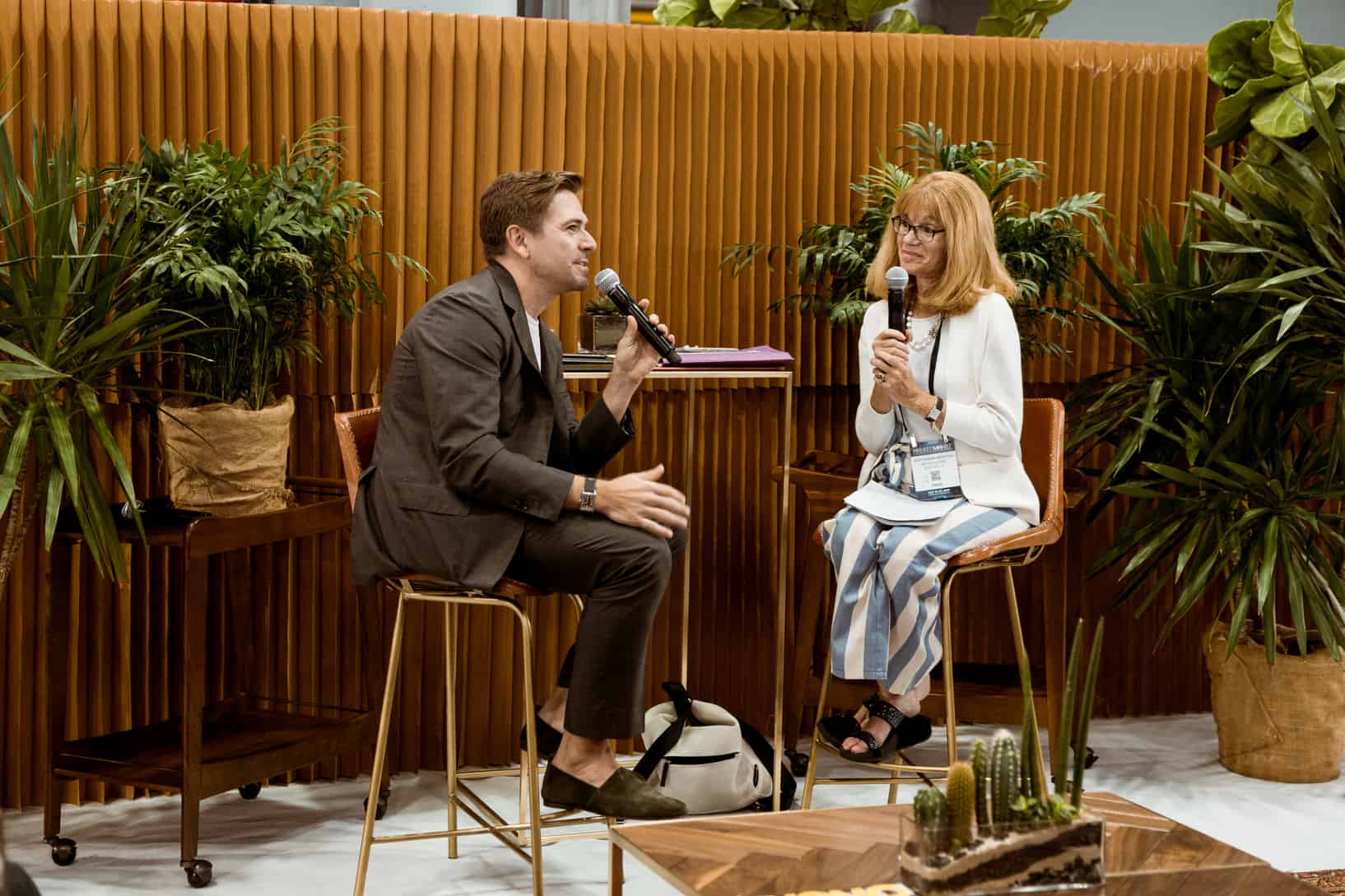A CONVERSATION WITH JUSTIN BERKOWITZ, MEN’S FASHION DIRECTOR AT BLOOMINGDALE’S

At the recent Project/MRket show in NYC, MR sat down with Bloomingdale’s insightful men’s fashion director to talk about what’s happening in the industry. Here, excerpts from our discussion.
Do you agree with the widely touted opinion that tailored clothing is down-trending while streetwear continues to evolve and grow?
I believe we’re in an exciting moment for menswear: men are very open to trying what’s new. At Bloomingdale’s, we’ve never stepped away from tailored clothing. It’s a core part of our business and I believe guys will always need a suit or sportcoat for certain life moments. And yes—we’ve certainly seen the evolution and growth of streetwear.
How would you define streetwear?
Anything that has a sports inflection, an athletic reference. Anything that plays well on Instagram: bold logos, graphic colorful designs. Anything comfortable, soft, music-inspired.
But for the future, I see a coming together of the two extremes: tailored clothing that’s a bit softer (more fluid trousers) and streetwear that’s a bit more polished.
Do you see Bloomingdale’s customers responding to pleated pants like those on runways in Paris and Japan?
Yes, I do. It will likely be a less literal translation of the high fashion versions on the runways but looser pants are comfortable and not far from the athletic track pants that guys have already been wearing for the past couple of seasons.
How would you define Modern Dressing for men?
I had a mentor when I worked at Details magazine who would always say “the mix makes it modern.” Modern dressing is not scripted: it shouldn’t be strictly defined fashion rules; you should allow for the unexpected.
How is men’s business at Bloomingdale’s changing?
We’ve always had a strong position in contemporary: we’ve always focused on popular culture and what happens in the world apart from fashion. In other words, we approach fashion from a culturally aware perspective.
What’s changing is the pace of change so we’ve had to refocus our events and activations. We now do more different things in the store but for shorter periods of time: very quick pop-up shops, big events with special personal appearances, concept shops where we might bring together product from all over the store for a month or two, then switch it out for something new…
(Editor’s note: At this writing it was announced that Bloomingdale’s is soon going into the subscription rental business, to launch mid-September.)
Speaking of the accelerated pace of change, how does this impact how you predict fashion cycles?
There’s no exact formula but we know that men like black, navy and gray and that a certain percent of our business will be in the core product. Yes, the trends are faster but by coordinating our messaging, we’re able to communicate what’s new in real-time. For spring 2020, I’m loving many of the new prints, both in wovens and short sleeve polos. I love the increased use of color.
Where do you get your fashion inspiration?
In addition to the runways, I often spend six hours on a Saturday afternoon in Soho. If you can’t get a read on what’s going on in men’s fashion from that, you shouldn’t be in the business. I’m also lucky to be in NYC with a ton of great specialty stores to frequent. Based on their smaller formats, they have the ability to test trends a little earlier with less risk.
Would you comment on the strength of your online business?
We-re an omni-channel company so the same buyers handle in-store and online. I handle storytelling for both, meaning I touch the product and the messaging: in-store, windows, email, social media, the home page. The goal is to hit every point of communication at once to maximize impact.
But with so many new online fashion sites appearing daily, how do department stores compete?
It’s a challenge. The internet exists in a way it did not two years ago: there’s a much broader array of product available to customers at their fingertips 24/7. Our goal is to balance the convenience factor with an exceptional in-store experience. We’re not going to win the convenience fight but if we focus on creating a superior shopping experience, we’ll gain customer loyalty.
If you’re building the right environment (both in-store and online), you’re going to strengthen customer relationships. Your customers are happy to support you as a business because they believe in you as a business.


